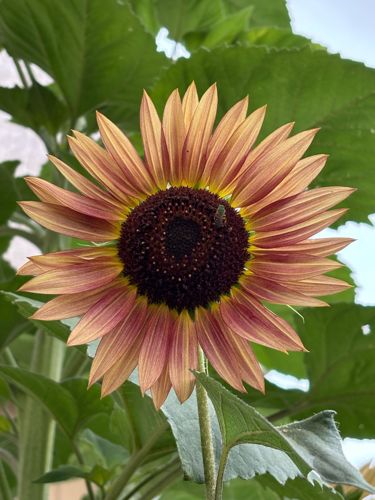Sweat Bee (likely a species within Halictidae)
Scientific Name: Various genera within Halictidae (e.g., Halictus, Lasioglossum, Agapostemon)
Order & Family: Order: Hymenoptera, Family: Halictidae
Size: Typically small to medium-sized, ranging from 4 mm to 10 mm in length. Some larger species can reach up to 15 mm.

Natural Habitat
Sweat bees are found in a wide variety of habitats including gardens, meadows, forests, agricultural fields, and urban areas. They nest in the ground, often in bare or sparsely vegetated soil, or in decaying wood.
Diet & Feeding
Adult sweat bees feed on nectar and pollen from flowers. Larvae feed on pollen and nectar collected and provisioned by the female bee in the nest.
Behavior Patterns
Sweat bees are typically solitary, with females building nests in the ground or in rotting wood. They provision their nests with pollen and nectar for their larvae. Some species exhibit primitive social behavior, where a mother and her adult daughters share a nest and foraging duties. They are active during the day, foraging for nectar and pollen on a wide variety of flowers.
Risks & Benefits
Risks: Sweat bees can sting, especially if they feel threatened or are accidentally swatted. The sting is generally mild, similar to a bee sting, and often less painful than a honey bee sting. Benefits: Sweat bees are excellent pollinators for a vast array of wildflowers, cultivated crops, and garden plants, including sunflowers. They play a crucial role in maintaining plant biodiversity and agricultural productivity.
Identified on: 8/15/2025